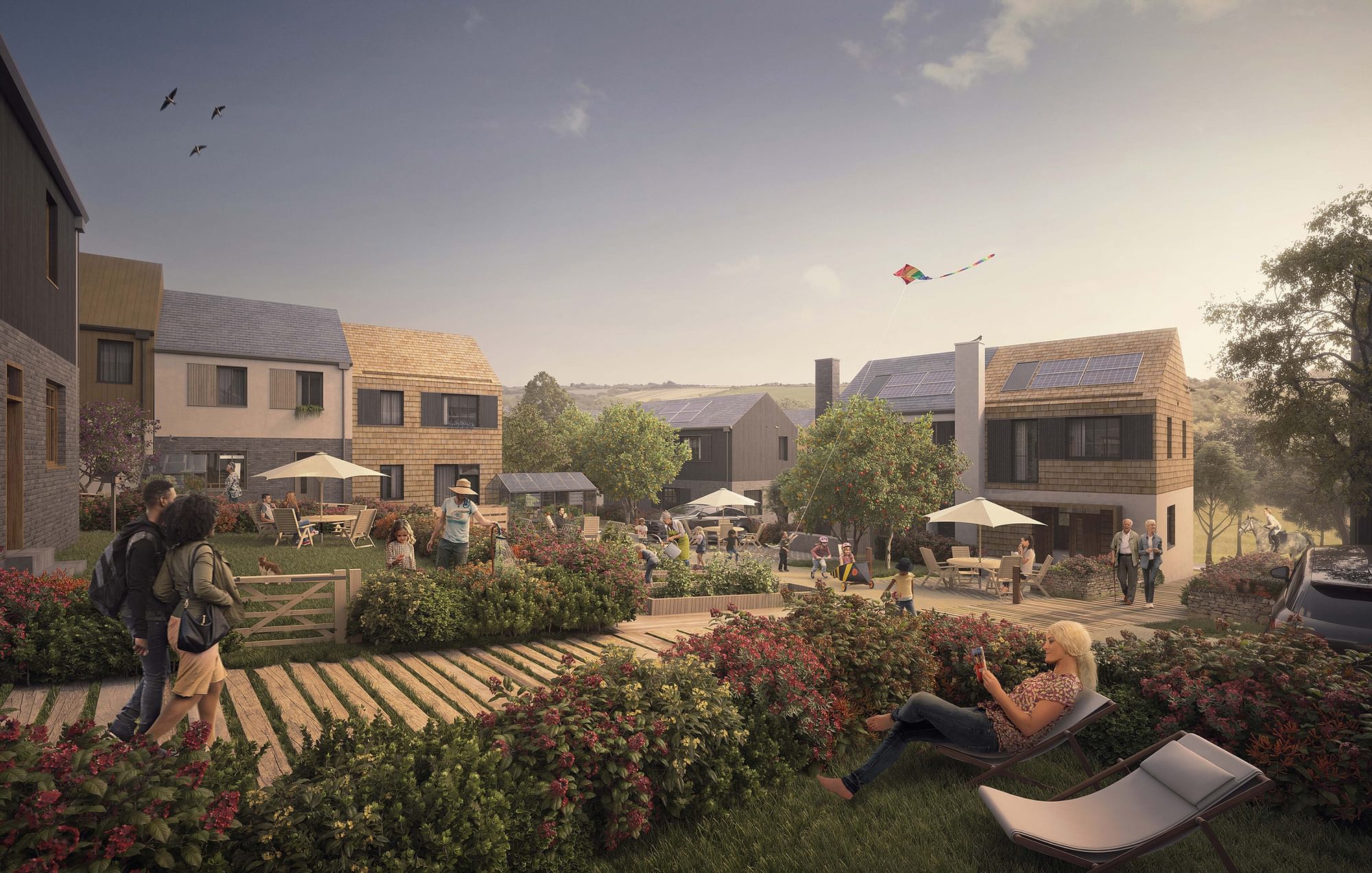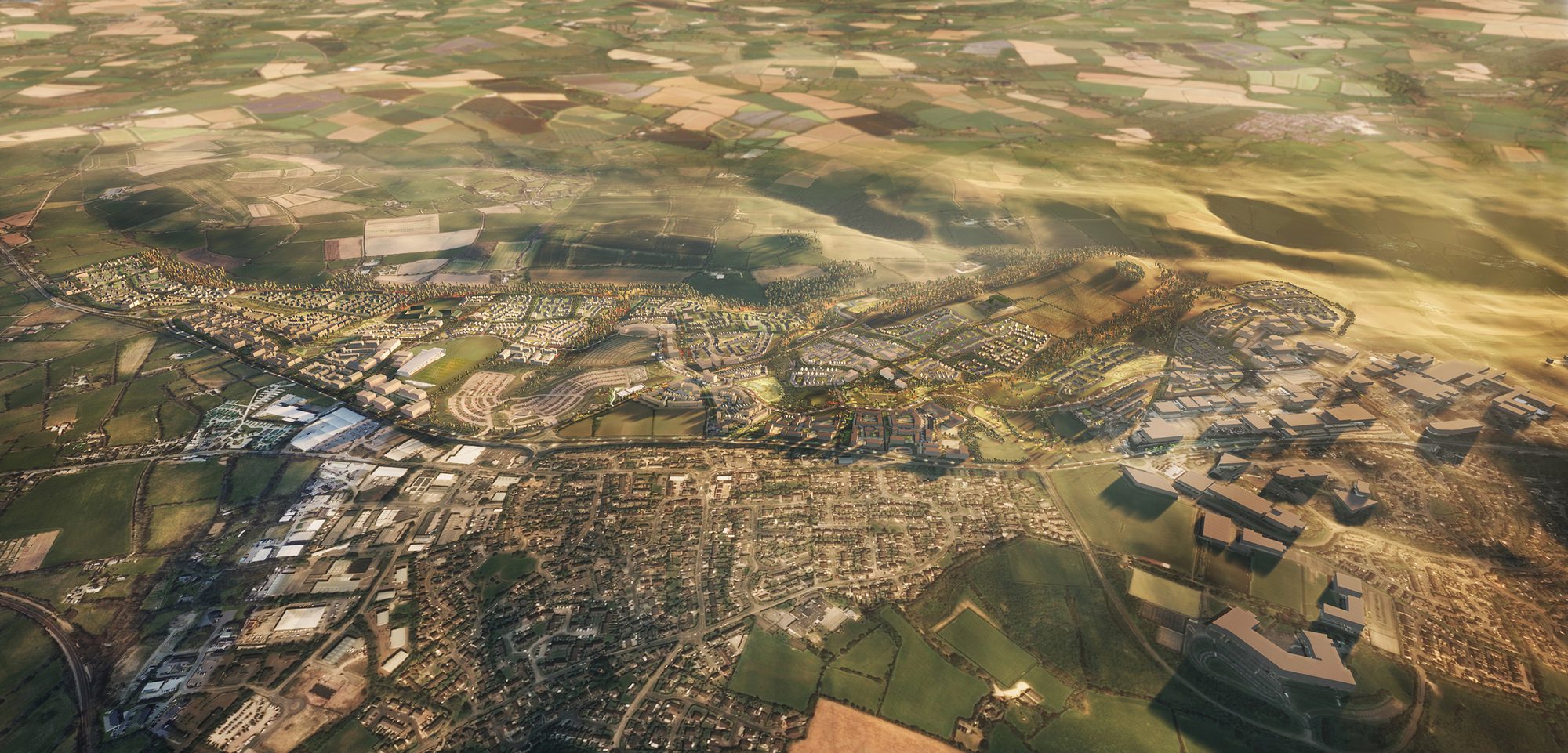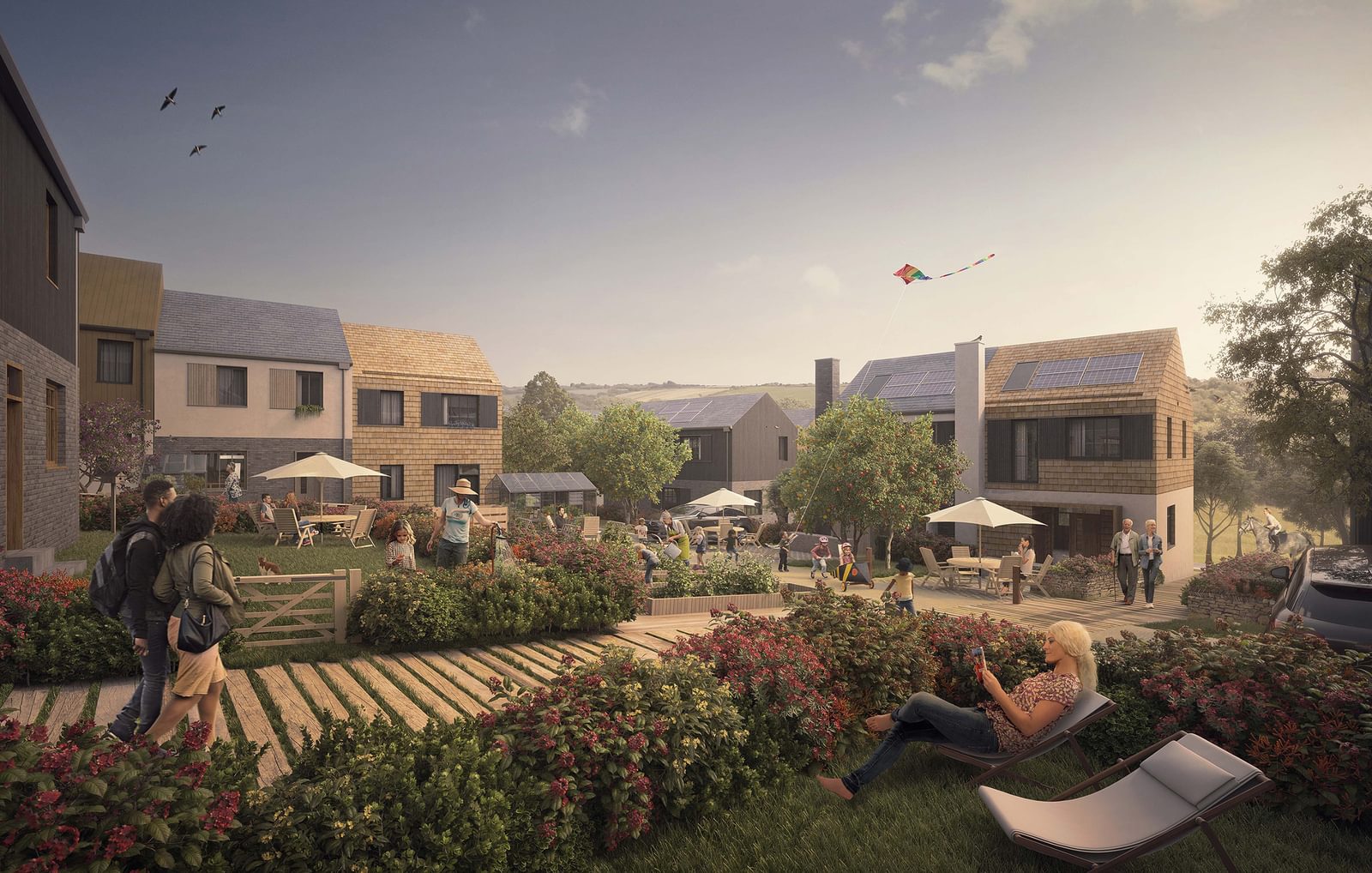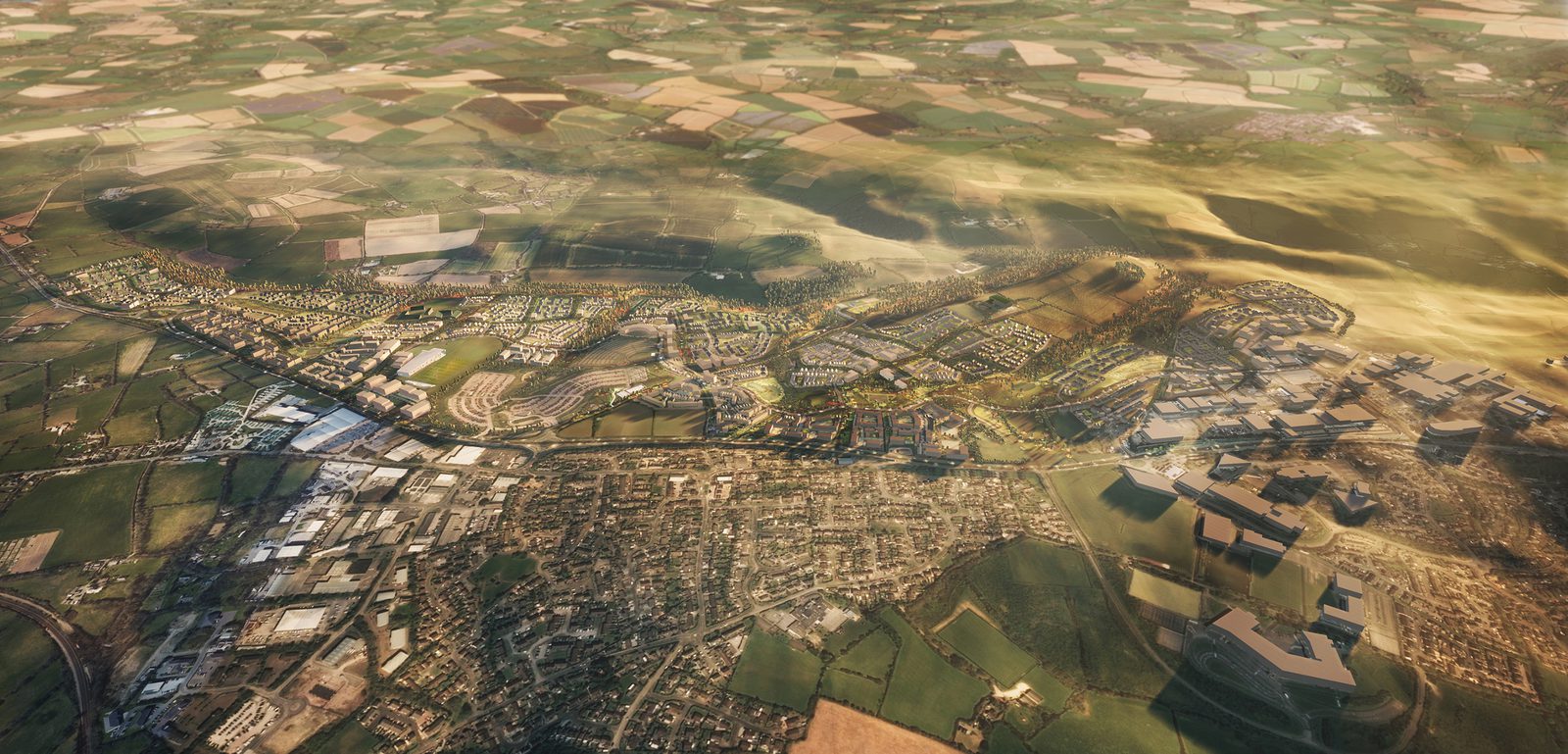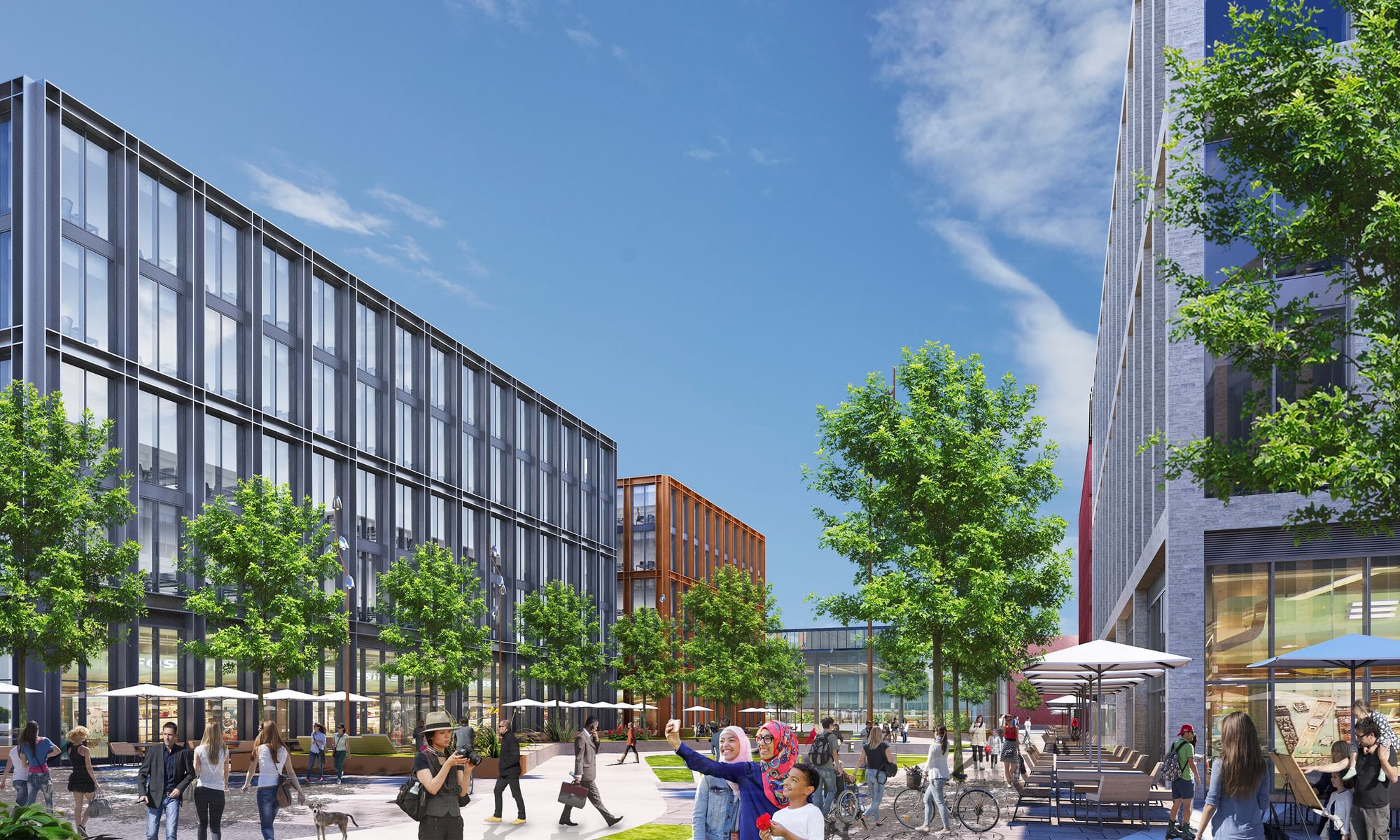Thought Leadership
Reframing placemaking: How to create places that work in practice
by AHR
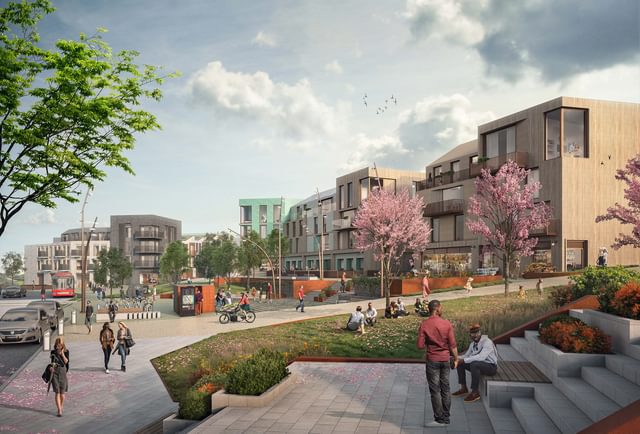
The first in a series exploring the foundations of people-centric, long-term place success.
Placemaking today connects urban policy, environmental responsibility and social cohesion. As local authorities, regeneration companies, and developers take on increasingly complex and long-term programmes, the question is shifting from what is placemaking? To how can we do it well, and keep it working over time?
This thought piece series explores how placemaking can be meaningfully applied in practice. Drawing on our own project experience, multi-sector insight and interdisciplinary expertise, we explore not only how places are shaped, but how they succeed.
In this first part, we begin with the foundations and explore what makes a place work, and how to approach placemaking with lasting value for people, communities and the environment.
1. Understanding place through people
Placemaking begins with people. It requires a clear understanding of how people use, perceive and shape space. That’s not just in terms of function, but in how places support identity, memory, connection and experience. That includes recognising the layers of meaning places hold: the histories that have shaped them, the communities that bring them to life and the sense of belonging they create.
Well-designed places bring people together. They make it easy to move around, find a sense of belonging, and feel part of everyday life. Just as importantly, they support people’s wellbeing—physically, mentally and socially. Getting this right takes careful thought. How streets connect, how spaces open up, and how homes, shops and parks are arranged all shape how a place feels and how people use it.
Central to this understanding is engaging with the people who already live, work and spend time in a place. Gaining local insight—whether through formal consultation, co-design workshops or informal dialogue—can highlight patterns of use, values, and overlooked constraints that might not be visible through traditional analysis alone. Involving communities early helps make sure that new places reflect the people who know them best.
National guidance such as the National Design Guide1 and the Design Council’s Framework for Innovation2 reinforce the importance of designing for people first by understanding real needs, collaborating openly, and shaping environments that are rooted in their local context and work across a range of uses and users.
RIBA’s Places Where People Want to Live3report adds further depth to this people-first approach. The guidance sets out a clear vision for places that support wellbeing, inclusion and pride of place. It reinforces that successful places are not just well-designed but offer the conditions for people to thrive.
2. Places as interconnected systems
Places don’t work in isolation. Successful developments bring together a mix of homes, services, infrastructure and public spaces that support daily life and long-term resilience. Taking an integrated approach means planning how they work spatially, socially and practically, it’s not just about how they look. It’s about designing the physical environment alongside the systems and services that support everyday life, making room for change as communities grow.
A well-balanced place brings together:
- A mix of housing types and tenures to meet different needs
- Social infrastructure such as schools, healthcare, and local community spaces
- Walkable neighbourhoods with clear, well-connected streets
- Green spaces and public realm that support wellbeing, biodiversity and climate resilience
- Sustainable transport, active travel routes and reliable digital connectivity
- Safe, secure streets and public spaces—designed to deter anti-social behaviour, reduce risk from hostile vehicles, and prioritise personal safety, especially for women and vulnerable groups
When these elements are considered in isolation, places can quickly fall short of what people need. For developers and local authorities, this means thinking early about how everything connects—from how school locations influence walking and cycling, to how green infrastructure supports drainage, social interaction and climate goals.
At Langarth Garden Village in Cornwall, we led the creation of a masterplan that placed community and context at its core. Working closely with Cornwall Council, stakeholders and local residents, we shaped a vision for a new sustainable community of over 3,800 homes. We carefully considered its relationship with neighbouring areas such as Threemilestone, ensuring it integrated seamlessly and contributed to a cohesive, well-connected wider community. The plan responded sensitively to the site’s natural topography, walking patterns and landscape character, with distinct neighbourhoods designed around accessibility, sunlight, and green infrastructure.
Early and comprehensive engagement with the community played a vital role in shaping the framework. Through workshops, drop-ins and co-design sessions, residents shared local knowledge and priorities. These insights directly influenced the layout, design code and phasing strategy, ensuring the proposals felt rooted in the place and responded to how people live now, and how they hope to live in the future.
3. Aligning vision with feasibility
Great placemaking starts with a strong vision, but it also needs to be grounded in practical delivery. A masterplan might work well on paper, but its success depends on how it responds to real-world conditions: how people move, how services are accessed, what the land can support and how the project remains financially viable over time.
Feasibility plays a vital role from the outset. Site appraisals, access strategies, flood risk, servicing, utilities and phasing all help shape what’s possible. When considered early, these factors don’t limit ambition—they inform it. They provide clarity and structure, helping teams make confident decisions and set the right direction from day one.
Just as importantly, feasibility helps future-proof places. By understanding how a place will be managed and maintained long term, we can design frameworks that are not only deliverable, but sustainable and adaptable as needs evolve.
Early feasibility thinking supports better collaboration, clearer choices and stronger momentum. It gives partners and stakeholders confidence and helps create places that work for people, not just in principle, but in practice.
4. Frameworks, not blueprints
Masterplans are most effective when they operate as adaptable frameworks. Rather than prescribing fixed outcomes, they provide principles and spatial logic that can guide development as conditions change whether that’s due to policy shifts, market dynamics or stakeholder priorities.
Flexible frameworks establish the structure for streets, spaces, densities and uses, but allow enough room for different phases and partners to adapt delivery over time. This approach helps maintain quality, resilience and relevance without constraining growth or innovation.
The National Model Design Code4 encourages the creation of robust frameworks that establish clear principles and structures for development while allowing flexibility and adaptability in detailed design and delivery over time. By focusing on outcomes—walkability, access to green space, community integration—rather than fixed layouts, masterplans can stay resilient through changing circumstances.
At Birkenhead, we developed both the Town Centre Masterplan and the Commercial District Masterplan, supporting Wirral Council’s ambitious 2040 Framework5. The proposals form a long-term strategy for transformation, delivered through a public-private partnership between Wirral Council and Wirral Growth Company, a joint venture with developer Muse.
Designed as a flexible framework, the masterplans divide the site into a series of plots that can be brought forward individually over a 15-year delivery period. This approach supports coordinated, phased development while allowing the project to adapt to changing market conditions, funding opportunities and infrastructure investment. It provides a strong spatial structure, without limiting future potential thereby giving partners the tools to make confident, place-led decisions at every stage.
The Commercial District Masterplan helps unlock investment into the town, introducing high-quality workspaces, active ground floors and an improved public realm. Across both areas, the focus is on creating a more connected, walkable and welcoming town centre. A place where people can live, work and spend time as the place evolves.
5. Stewardship and long-term performance
Placemaking is not complete when construction ends. How a place is managed, maintained and experienced over time is just as important. Building stewardship and adaptability into early decisions helps create places that can grow, change and thrive for the long term.
Planning for longevity means thinking early about how places will be managed, maintained and supported. This includes setting out who will look after public spaces, how community facilities can adapt as needs change, and what governance structures will help residents feel connected and involved over time.
The importance of long-term stewardship is increasingly recognised as central to creating healthy, inclusive and resilient places. Designing for the future means creating environments that people can rely on including socially, economically and physically. As the Building Better, Building Beautiful Commission sets out in Living with Beauty6:
Our built environment and our natural environment belong together. Both should be protected and enhanced for the long-term benefit of the communities that depend on them.
Settlements should be renewed, regenerated and cared for, and we should end the scandal of left-behind places, where derelict buildings and vandalised public spaces drive people away.”

6. Collaboration and integrated expertise
Creating successful places needs a wide range of perspectives. From planning and funding to climate resilience and community services, modern development is complex and working together across disciplines is essential.
Collaboration brings together architects, planners and building consultants with engineers, cost managers, ecologists, access specialists and community engagement professionals. By working in an integrated way from the start, challenges can be tackled early, opportunities can be shared across boundaries, and everyone involved can stay focused on delivering places that work for people.
Crucially, collaboration should also reach beyond the built environment. Schools, healthcare providers, housing associations, cultural venues and local businesses all shape how a place feels and functions. Their insight can help design more connected communities, stronger public services, and better day-to-day experiences. Early engagement with these partners helps ensure that placemaking strengthens the systems communities already rely on and builds new opportunities for the future.
Setting the foundations for success
Placemaking is about more than good design. It’s about creating places where people, infrastructure and communities come together to grow, change and thrive. Getting this right takes thoughtful planning, close collaboration, and a long-term commitment to how places are cared for over time.
The foundations of successful placemaking include:
- Putting lived experience at the heart of spatial and strategic decisions
- Recognising the connections between physical and social infrastructure
- Balancing ambition with technical and financial realities
- Planning for adaptability, stewardship and future change
- Bringing together interdisciplinary teams to shape, deliver and sustain places
Successful places recognise that different people experience them in different ways — as homes, workplaces, spaces for leisure, connection, support or simply passing through. Designing with this diversity in mind is essential. Inclusive, mixed use environments foster social integration, encourage vibrant street life and create spaces that feel welcoming, safe and relevant to everyone.
With the right foundations, placemaking can turn ambition into lasting success and create places that are inspiring, welcoming and built to endure.
Stay tuned for more in our placemaking series
In our next thought piece, we’ll explore how placemaking supports identity, inclusion and social connection—not just through engagement, but through the structure of streets, spaces, design language and everyday life.
We bring together architectural vision, technical insight and delivery experience to shape thriving places, helping local authorities, developers and communities create spaces that are designed to last. Find out more here.
References
- https://assets.publishing.service.gov.uk/media/602cef1d8fa8f5038595091b/National_design_guide.pdf
- https://www.designcouncil.org.uk/our-resources/framework-for-innovation/
- https://www.architecture.com/knowledge-and-resources/knowledge-landing-page/riba-placemaking-report-ten-characteristics-places-people-want-to-live?srsltid=AfmBOoo_6JA2VF8UwlnAipDjqEeBZ2ZCFzUxeZ3GAw1uM_LI3PeMr9Pf
- https://www.gov.uk/government/publications/national-model-design-code
- https://democracy.wirral.gov.uk/documents/s50086068/Enc.%202%20for%20Draft%20Birkenhead%202040%20Regeneration%20Framework.pdf
- https://assets.publishing.service.gov.uk/media/5e3191a9ed915d0938933263/Living_with_beauty_BBBBC_report.pdf
Posted on:
May 16th 2025
Topics:
Share on
Related Articles

Thought Leadership
How MMC is shaping the future of public sector design
In the face of mounting challenges, the public sector is rethinking how it delivers spaces. MMC offers a smarter, faster and more sustainable way to build and operate the spaces people rely on.
Date: 29 Apr 25
by AHR

Thought Leadership
Boosting university income streams through collaborations with developers and local authorities
Universities face mounting financial pressures, many are turning to strategic partnerships with local authorities and private-sector developers.
Date: 31 Mar 25
by AHR

Thought Leadership
Healthy Buildings: Going Beyond Performance
Designed for wellbeing and sustainability, healthy buildings create spaces that inspire comfort, happiness, and productivity.
Date: 22 May 25
by AHR

Practice News
Decarbonisation and healthy buildings: Insights from our roundtable discussion in Liverpool
We recently gathered again in Liverpool with industry professionals to explore the pressing topics of decarbonisation, sustainability and the principles behind designing healthy buildings.
Date: 14 Jan 25
